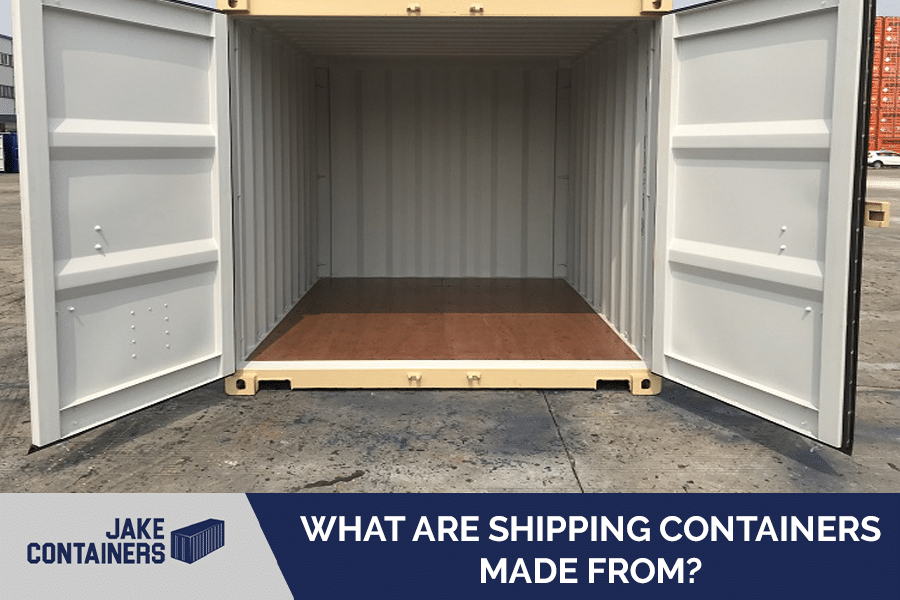When you see a shipping container, it will look as though it’s constructed of the strongest steel and is invulnerable to any kind of damage because of its superior construction. Many components used to make shipping containers, e.g., frame, cargo doors, corrugated wall panels, and cross members, are generally made from corten steel.
This is a unique variety of steel which is sometimes referred to as weathering steel, and it is the primary material used in the manufacture of modern shipping containers. The thing that differentiates corten steel from other kinds of steel is that it’s a group of steel alloys developed by engineers to make the shipping containers more resistant to corrosion.
Container manufacturers favor this kind of steel because it has all the physical properties which make it rust-resistant, while still being weldable. While the main section of a shipping container will generally be constructed from this corten steel, other areas are manufactured using various other materials.
Cross Members
The flooring of a shipping container will always have beams or joists, referred to as cross members, and these provide support for the shipping container floor. There is a space between the cross members and the ground, which is essential so that moisture shouldn’t seep into the container from the ground and cause damage to the contents. Because storage containers have cross members, they don’t usually require a foundation like a ground-level office might. The cross members serve to lift the floor frame away from the ground and minimize any damage from natural elements.
Cargo Doors
Every storage container is equipped with two steel doors usually found at one end of the container, although some containers have doors installed at both ends. Cargo doors are intentionally designed to discourage theft or intrusion from weather elements on long voyages. They provide serious security for the cargo contained within them, and they generally have a unique locking mechanism that further enhances their safety capabilities.
The storage container doors are closed by lock rods that run the length of the door. Lock rods have locking cams at the top and bottom that hook into cam retainers on the threshold of the container. Door handle levers turn the lock rods to open and close the doors. Door handle brackets have a place to place a padlock to lock the handle against the container door. Most one-trip storage containers will also have a lockbox, a metal box welded to the door for enhanced security.
Flooring
In most cases, shipping containers will have marine-grade plywood flooring infused with an insecticide to discourage insects from nesting in the container. This insecticide presents no risk to humans working in the containers, but they are a solid discouragement to hungry insects. Recently, more shipping containers have been incorporating bamboo flooring rather than marine plywood because it has lower costs and greater availability. Bamboo flooring is also mildew-resistant, extremely durable, and is an excellent renewable resource used in shipping container construction. Most 40 foot containers also have a steel plate in the middle to give the floor extra strength. All 20-foot containers and new one-trip 40-foot containers have a set of fork pockets on the bottom rail of the container, giving the floors added strength.
Where to Purchase Excellent Shipping Containers
If you need a weather-resistant storage space where you can put furniture, sporting goods, equipment, or practically anything else, a steel shipping container might be just what you need. Many people have even converted these containers into living quarters because they’re so stable and weathertight. You’ll find just the container you need at Jake Containers of Ridgefield Park, NJ, so contact us as soon as possible and take a look at all the containers we have available.



